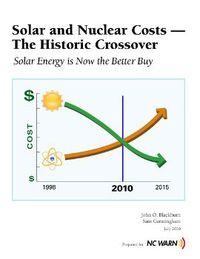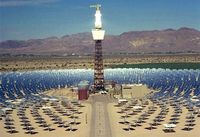
While their experts, like former Duke chancellor John Blackburn, have done important work showing that the costs of renewable power and its alternatives are crossing, and will continue to cross, these reports are still subject to fisking by skeptics who claim their views on climate change color their research.
Economic arguments have to scale in the real economy to become effective.
Because past solar facilities didn't scale to their needs utilities like Georgia Power are still going ahead with new, giant nuclear plants, and pushing through rate hikes based on them, arguing that regardless of costs such plants scale to meet demand, while renewables just don't.
The good news is these high-priced plants bring the point of cost crossover closer by raising utility rates where they have traditionally been low.

That's the real reason why scaled solar projects like SolarReserve's molten salt plant, which uses excess heat on salts that then cool to supply power at night, remain vital. A single 450,000 megawatt plant does not answer the skeptics by itself, but its output is at least speaking a language utilities understand.
Proving the cost case to industry, first against nuclear power, and later against coal and gas, is crucial toward building the larger industry, whether that industry winds up being composed of large-scale facilities or (as I believe) smaller production facilities in residential and industrial neighborhoods.










Make Electricity
Dana Blankenhorn: Making the Solar Crossover Argument Mainstream